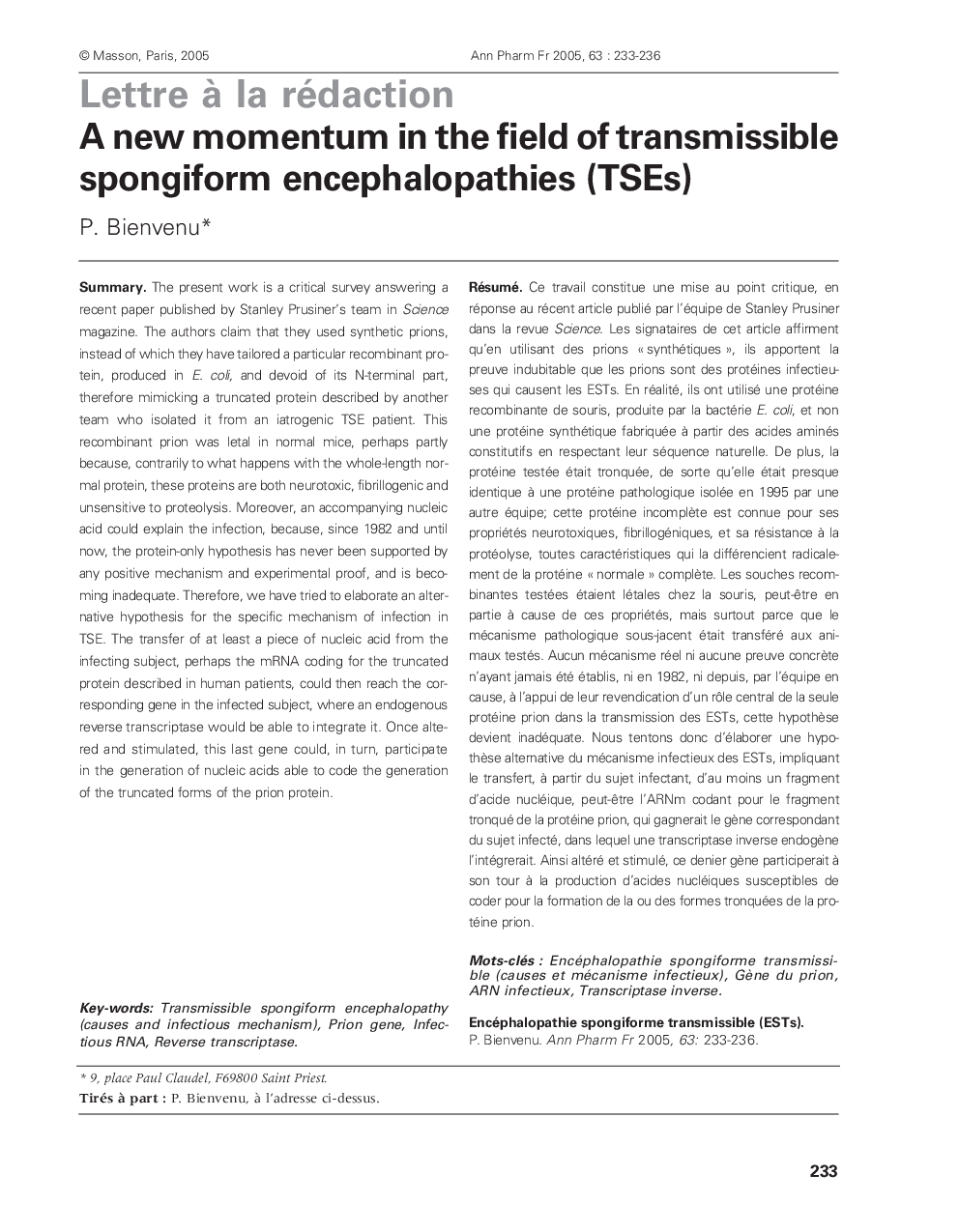| Article ID | Journal | Published Year | Pages | File Type |
|---|---|---|---|---|
| 8993003 | Annales Pharmaceutiques Françaises | 2005 | 4 Pages |
Abstract
The present work is a critical survey answering a recent paper published by Stanley Prusiner's team in Science magazine. The authors claim that they used synthetic prions, instead of which they have tailored a particular recombinant protein, produced in E. coli, and devoid of its N-terminal part, therefore mimicking a truncated protein described by another team who isolated it from an iatrogenic TSE patient. This recombinant prion was letal in normal mice, perhaps partly because, contrarily to what happens with the whole-length normal protein, these proteins are both neurotoxic, fibrillogenic and unsensitive to proteolysis. Moreover, an accompanying nucleic acid could explain the infection, because, since 1982 and until now, the protein-only hypothesis has never been supported by any positive mechanism and experimental proof, and is becoming inadequate. Therefore, we have tried to elaborate an alternative hypothesis for the specific mechanism of infection in TSE. The transfer of at least a piece of nucleic acid from the infecting subject, perhaps the mRNA coding for the truncated protein described in human patients, could then reach the corresponding gene in the infected subject, where an endogenous reverse transcriptase would be able to integrate it. Once altered and stimulated, this last gene could, in turn, participate in the generation of nucleic acids able to code the generation of the truncated forms of the prion protein.
Keywords
Related Topics
Health Sciences
Pharmacology, Toxicology and Pharmaceutical Science
Drug Discovery
Authors
P. Bienvenu,
